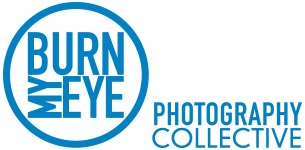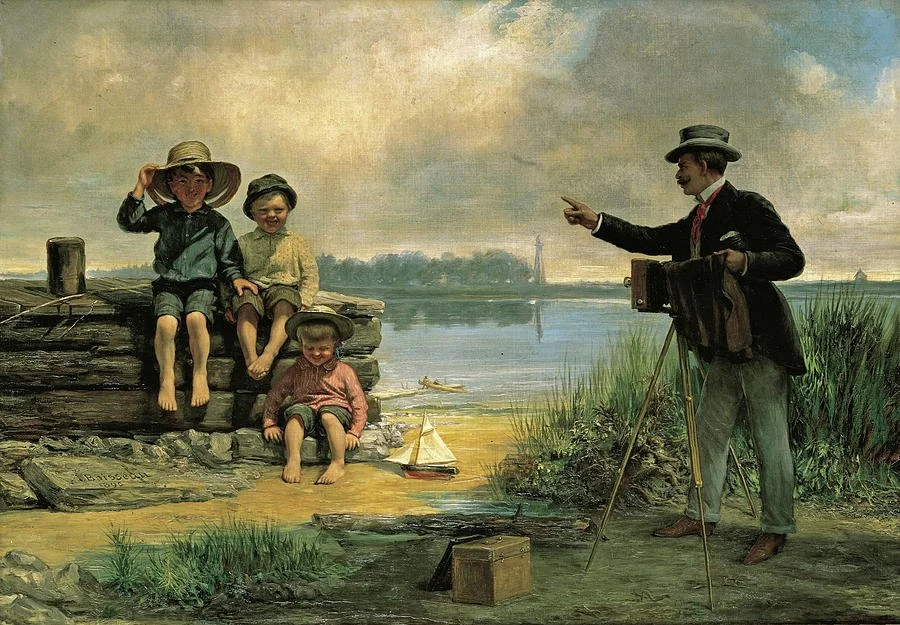Dimitris: Hi Davide! Nice to be having a discussion with you. What I know is that you are Italian, living in Spain and that you have 2 kids. Can you please give me an enriched bio?! Would love to know more about who the person behind the photos is.
Davide: Hi Dimitris, it’s great to be chatting with you. I am an amateur photographer from Bologna, Italy, but I’ve lived in Madrid since 2007. Photography serves as a therapy for me, a way to look into myself by observing the world and trying to make sense of it. I also love hiking, playing basketball, chess, cooking and above all music - I enjoy almost every genre, but especially jazz, psychedelia, rock and electronic.
Dimitris: Have you been able to connect your love for music to your love for photography? And in which way?
Davide: I haven’t really tried to blend these two passions. I’m not a musician; I just love listening to music, often while editing photos or enjoying others' work. Sometimes a song comes to mind when I see a particular image, but that’s about it. And I don't listen to music while walking or taking photos on the street, it would distract me too much from the surroundings, especially with earphones. I prefer being aware of the ambient sounds.
Dimitris: Do you have a preference regarding surrounding sounds while you are on your photowalks? Do you prefer the small quiet streets of Madrid than the large and busy boulevards? What are your favourite places/settings of shooting?
Davide: There’s a special place in my heart for one of the busiest spots in the city, Puerta del Sol, where I did a lot of ‘street photography training’ when I moved here, but I enjoy taking pictures no matter where I am, and nowadays I rarely go out with the sole purpose of shooting. I prefer to always carry a small camera and use it whenever I can, in my daily city life or during family trips on the weekends. We often go to a remote village in a natural park on the Portugal border where my girlfriend’s family has roots. It’s a nice change from Madrid, and I enjoy focusing on light and composition in a quieter, rural setting. Only during local festivities it gets full of people doing all sorts of interesting things, and I enter a photographic frenzy, as I always loved shooting people. So, to answer your question, I’d say my ideal setting combines beautiful nature with meaningful human activity. A countryside festival or a beach party with good music sounds just perfect to me :)
Dimitris: As far as I remember you disappeared from the social media world soon after your kids were born, but I was happy to see you back recently. I would love to know more about this inactivity period. Was it inactivity regarding social media or had you even stopped taking photos? How did all this feel for you?
Davide: You’re right, I stepped back from social media for a few years due to shifting priorities and limited time. It wasn’t just about the kids; I also needed to focus on improving my health and job conditions. I spent less time thinking about photography and looking at pictures, but I still took many photos, mostly of family and friends. My only regret is that, while slowly leaving aside my old analog camera, it took me a while before I bought a decent digital one, so most of the images from this period are taken with a poor-quality cameraphone.
Dimitris: How does the transition from analogue to digital feel for you? Is your old analog camera completely abandoned now?
Davide: I've never spent much time thinking about cameras, and I've usually been happy with what was already available to me. I learned the basics with my dad's Minolta that was lying abandoned at home, loved it and never cared to buy another one. A few years later I received a cheap digital compact for my graduation, and started using it alongside the other one because it allowed me to practice more freely and experiment a bit, as I was being rather parsimonious with my analog shots. I enjoyed using both until the digital one died, but I usually preferred my film photos for their look and the thoughtful process they required. When I started out, film forced me to carefully think about composition and timing, as I couldn’t afford to waste too many frames. This was useful to internalize certain ideas and educate my instinct. Also, I normally waited to have a few rolls completed before going to the lab, and this added a romantic, rewarding element to it. Seeing the photographs after weeks or even months felt like receiving a present as a kid: excitement, disappointment, joy. Often a surprise, a moment buried under many others and forgotten.
But as much as I’ve enjoyed the magic of film, I am very happy with the camera I have now. Digital allows me to easily experiment with manual flash, which I had never used before, and I like the image quality these little cameras have reached. Still, I’ve recently bought some film and plan to revive the old Minolta, abandoned for far too long. Even if only for a few shots, just to feel that magic once again.
Dimitris: So now that you are a part of the digital era in photography, I wonder how much you take advantage of it, while working on a scene. Will you click a scene many times before you go on? Or are you more selective and disciplined, as in the good old analog days?
Davide: I do take more pictures in general, not necessarily more of the same subject. For example lots of unpeopled shots that I didn’t use to take on film: plants, objects, buildings, experiments with flash, long exposures or simply the umpteenth photo of friends and family around me at the moment. I shoot more frequently, but my approach to photographing people hasn’t changed much. With strangers, I usually take one or two shots and move on. I might “work the scene” every once in a while, if the situation allows it and I feel like it has potential, but I don’t like having dozens of slightly different takes of the same subject to choose from when editing. I want to avoid being overwhelmed by thousands of meaningless photos, and prefer to minimize the time spent editing and post-processing.
Dimitris: I got curious about those umpteenth photos of friends and family. Do you take such photos only when you see an artistic potential in the scene or do you also take ''souvenir'' photos?
Davide: I’m not really into “souvenir photos”: I always hope to get something a bit different and interesting even when I take pictures of friends and family.
Dimitris: Do your kids and partner like to get photographed by you? Are you more in favour of candid or posed moments with them?
Davide: Capturing candid moments is what I love the most about photography, and my kids are very lively and funny, always up to some mischief without paying attention to me, so I have plenty of raw material to work with. I think a lot of the magic and fun of this discipline comes from the surprise factor, rather than simply trying to recreate an image that is already in one’s mind. They say truth is stranger than fiction, because fiction has to follow some rules in order to make sense. However, I’m not a purist and I enjoy posed shots too if they work. What really matters in the end is whether the photo makes me feel something or not.
As far as being repeatedly photographed, they got used to it and largely ignore me, but the truth is I’m constantly trying to find a balance between my passion and my family, and they do get annoyed at times if I become too absorbed in it. They usually like the photos though.
Dimitris: Where do you see yourself in regard to photography in 10 years from now? Do you have any dreams and goals you would like to accomplish within these 10 years?
Davide: I find it really difficult to think that far ahead. I just hope to still be here with my family and friends, having fun taking pictures of what I see. That’s the most important thing. I’ve always been too lazy to put up a website, edit a portfolio, participate in contests and festivals, and I’m never sure my photos are really worth it. But I should definitely connect more with other photographers in real life, something I miss and plan to work on. And keep expanding my small photobook library, not just for myself but to share this passion with my kids and hopefully ignite the same spark in them.
If I had to set a photographic goal for the next few years, it would be to start doing more with my photos than just sharing them online or making a few prints for my friends. What exactly, I don’t know yet.
Dimitris: What is your favourite photobook from the ones you have in your library and why?
Davide: It’s hard to pick just one. I’d say the anthology on Gianni Berengo Gardin published by Contrasto, because it speaks to me about my roots. Also, Joel Meyerowitz’s “Where I Find Myself” because it’s a massive and fascinating book that will take a long time to fully explore. And Alex Webb’s “The Suffering of Light” because it’s just incredibly beautiful.
Dimitris: Thank you Davide, I am happy to have interviewed you and that I got to know you better. I wish you good luck with your photography in the future.
Davide: Thank you so much Dimitris, it's been an honor and a pleasure to chat with you!
Links:















































